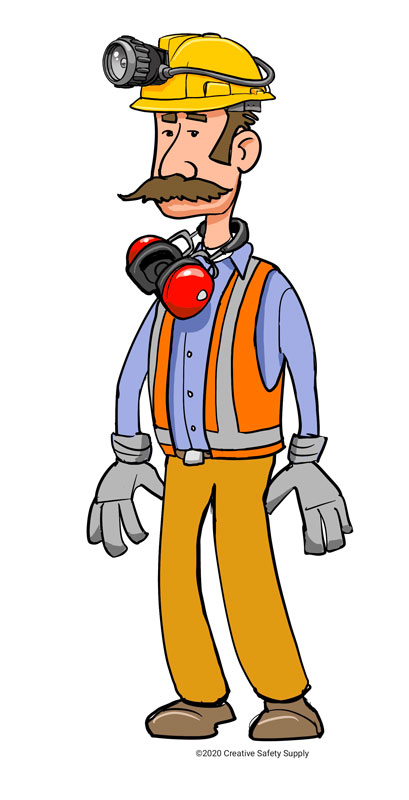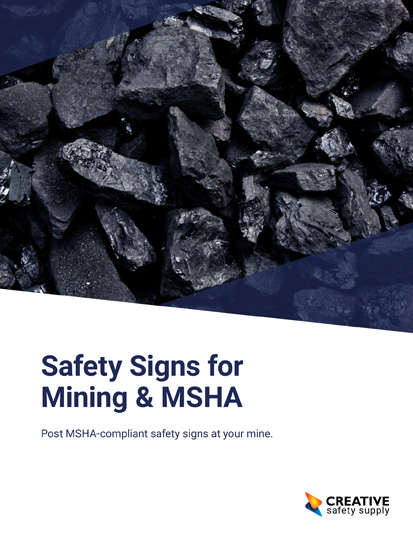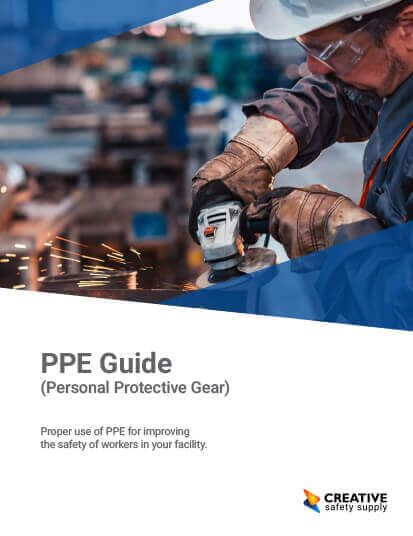
Although PPE is considered the last line of defense for workers, it can be the difference between a minor injury and a life-altering injury for miners. The dangers of mining pose serious health hazards and an accident can cause loss of limbs or even death. Like any other workplace, employers and managers will need to provide PPE to the worker at no cost to them and ensure the PPE fits well and is maintained.
The following are different pieces of PPE that will keep workers safe while they’re working in the mine. Remember, miners will need to be protected from head to toe!
→ Hard hats: There are different classes of hard hats depending on the conditions of the mine site, for instance some instances will call for a complete closed hat to protect the worker from water or a hard hat may need to be ventilated. Lights can be mounted on hard hats to provide working light for the worker.
→ Safety glasses: Eye protection may sometimes be incorporated with a full respirator, but otherwise glasses or goggles must be provided to workers. Dust and dirt are often floating around the mine and glasses will keep the debris from going into the eye. Safety goggles will keep chemicals from splashing into the eye and should be distributed in mines working with chemicals. If welding or cutting is going on at the mine site, a full face shield may be the ideal choice to protect workers from flying particles or grinding residues.
→ Mask/Respiratory protection: Dust exposure, especially in coal mining, poses a huge risk to workers. Each workplace will have to be individually evaluated to ensure the proper level of respiratory protection is chosen. In some cases, this may be a nose and mouth cover with replaceable filters, but other environments may call for a powered air-purifying respiratory.
→ Hearing protection: The loud machines, tools, and vehicles miners use on a daily basis combined with the confined spaces of a mine can be a dangerous mixture for workers’ hearing. Ear muffs or ear plugs will need to be provided to keep workers from experiencing irreversible hearing loss.
→ Reflective clothing: Mines are small, noisy spaces and workers must be able to be seen in these spaces. Workers should be outfitted in reflective jackets or shirts as well as reflective pants. When workers can be easily seen, they are less likely to get struck by vehicles traveling around the mines.
→ Personal fall protection equipment: Falls commonly occur in mines, even those underground! After identifying the different fall hazards in the mine, like an elevator or mining shaft, a personal fall arrest system should be put in place. Fall protection equipment includes an anchor, body support, and connectors.
→ Hand & foot protections: Miners should wear durable steel-toed boots when working in a mine. These boots can be different depending on the environment, a boot may need to be waterproof or may need to have a puncture-proof sole. Hand protection is a bit simpler. In most cases, a general safety glove in cotton or leather will work just fine.
PPE must be carefully selected for the situation at hand. Safety managers and employers should evaluate the risks and hazards present at the mine site and make educated choices as to what PPE should be purchased for their workers.


